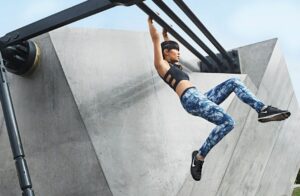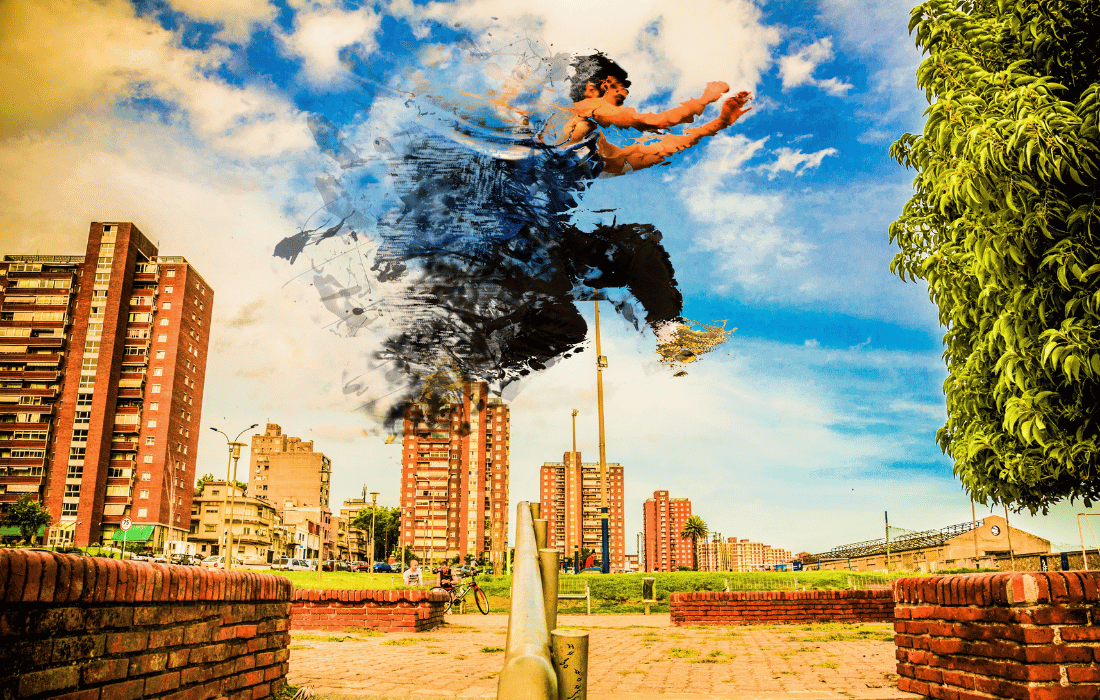Imagine a city as a giant playground—every railing, stairwell, and rooftop representing an opportunity to push the limits of human movement. Parkour and free running, once seen as fringe activities reserved for rebels of the urban landscape, are rapidly gaining recognition as serious sports with the potential to dominate the competitive action scene. But will these urban ninjas take their place among the mainstream sports elite? Or will parkour’s raw, counter-culture appeal remain underground, a movement free from corporate ties and arenas?
In this article, we’ll dive deep into parkour’s rise, its philosophical underpinnings, the culture of fear and courage it embodies, and its potential future in competitive sports. We’ll also explore how one deceptively simple exercise—the dead hang—is crucial to parkour performance and injury prevention. Finally, we’ll examine the potential for parkour leagues and mainstream sponsorships and whether these developments can happen without diluting the soul of the sport.
Parkour: The Art of Movement
Parkour, also known as the “art of displacement,” originated in France in the 1990s, driven by David Belle and his vision of navigating environments with efficiency and fluidity. The basic idea is simple: Get from point A to point B in the most efficient way possible, whether that’s scaling walls, vaulting over obstacles, or jumping between rooftops. Free running, an offshoot of parkour, incorporates more acrobatics and stylistic flair, where the aesthetic of movement becomes just as important as the practicality.
What sets parkour apart from many other sports is its total freedom from traditional structures. No equipment is required—just the world around you. It turns the city into an obstacle course, giving practitioners, known as traceurs, an outlet for physical and creative expression.
In “Parkour as Acrobatics: An Existential Phenomenological Study of Movement,” researchers examined the bodily experience of parkour through the lens of existential phenomenology. They argue that parkour involves a constant process of challenging one’s physical limits (referred to as “challenge,” “break,” and “clean”). Traceurs face challenges (what’s not yet possible), breakthrough physical and mental barriers, and clean up their technique until it becomes second nature. This cycle of challenge and mastery is what drives traceurs to push the boundaries of human movement.
Fear and Movement: Parkour’s Emotional Landscape
Parkour isn’t just about physicality—it’s about mastering fear. While many sports involve overcoming nerves, parkour places fear front and center. When a traceur stands at the edge of a roof, contemplating a jump, they must first overcome their internal battle with fear before they can even engage their muscles.
The article “Playing with Fear: Parkour and the Mobility of Emotion” explores this phenomenon, suggesting that fear in parkour is not something to be avoided, but embraced and played with. The urban landscape becomes a space where fear manifests in different ways—sometimes as a hindrance, but often as a motivator for creative movement. The ability to face and conquer fear, to embrace it as part of the process, is what makes parkour so psychologically demanding and rewarding.
This emotional complexity adds depth to parkour’s appeal, especially in competitive settings. It’s not just about who can run the fastest or jump the furthest—it’s about who can manage their emotions while navigating an environment that was never designed to be “played” in.
Training for Parkour: The Importance of the Dead Hang
While parkour may look like pure freedom, the reality is that it requires incredible physical conditioning. From powerful jumps to precise landings, traceurs need to develop a wide range of athletic abilities, including balance, coordination, and endurance. However, one of the most overlooked aspects of parkour training is grip strength, which is essential for scaling walls, swinging between obstacles, and catching onto ledges.
That’s where the dead hang comes in.
 The dead hang is a deceptively simple exercise: you hang from a bar, arms extended, and let your grip do the work. In parkour, grip strength can be the difference between sticking a landing or falling short. Dead hangs improve grip endurance, shoulder stability, and overall upper-body strength. Variations, such as single-arm hangs, can add complexity and further challenge the core and shoulders, which are crucial for explosive movements in parkour.
The dead hang is a deceptively simple exercise: you hang from a bar, arms extended, and let your grip do the work. In parkour, grip strength can be the difference between sticking a landing or falling short. Dead hangs improve grip endurance, shoulder stability, and overall upper-body strength. Variations, such as single-arm hangs, can add complexity and further challenge the core and shoulders, which are crucial for explosive movements in parkour.
Injury prevention is another significant benefit of dead hangs. Traceurs are prone to wrist, elbow, and shoulder injuries due to the impact forces and awkward landings they endure. By training dead hangs, athletes develop the strength needed to absorb those forces safely.
Parkour as a Lifestyle Sport
Parkour isn’t just a sport—it’s a lifestyle. It requires a fundamental shift in how traceurs see the world around them. The city transforms from a collection of static buildings and objects into a dynamic landscape full of potential. This mindset is what makes parkour so different from traditional sports.
A review titled “What Makes Parkour Unique? A Narrative Review Across Miscellaneous Academic Fields” explores parkour’s distinctiveness as a sport without fixed rules, formal settings, or necessary competition. Traceurs view the city as their playground, and rather than conforming to pre-set tracks or structures, they adapt to ever-changing environments. The precision required for landing jumps is one of the most defining elements of parkour. Unlike in gymnastics, where the goal is often a soft, controlled landing, parkour landings are about adaptability—targeting the landing zone with the forefoot and using the body’s momentum to transition fluidly to the next movement.
The Competitive Future of Parkour
With parkour’s rise in popularity, particularly through viral videos and social media, the question arises: Can parkour evolve into a mainstream competitive sport? Leagues and competitions have already started to emerge, like the FIG Parkour World Championships, signaling that parkour is gaining traction as a legitimate competitive discipline.
Competitions tend to focus on time trials, where athletes race through urban-inspired courses, or on creativity, where judges evaluate the style, difficulty, and originality of the moves. Much like skateboarding and snowboarding before it, parkour has the potential to develop into a mainstream sport, complete with sponsorships, international events, and perhaps even an Olympic debut.
But will the competitive format strip parkour of its rebellious, free-form nature? Parkour’s appeal lies in its rejection of formalized sports structures, and turning it into a commercialized, rule-heavy competition could risk alienating the community that made it popular in the first place. However, if organizers can strike a balance between structure and creativity, parkour could follow in the footsteps of sports like skateboarding, where competition and individuality coexist.
The Role of Sponsorships and Media
The commercialization of parkour has already begun, with companies like Red Bull and GoPro sponsoring athletes and events. Social media platforms like YouTube, Instagram, and TikTok have also played a pivotal role in spreading parkour’s appeal. Parkour videos regularly go viral, giving athletes a global platform to showcase their skills.
Corporate sponsorships could be both a blessing and a curse. On one hand, financial backing would allow athletes to train full-time, push the limits of their sport, and bring parkour to a wider audience. On the other hand, the rebellious, anti-establishment ethos that defines parkour could be lost if it becomes too sanitized for mainstream appeal.
The Urban Ninja Movement: A Cultural Shift
At its core, parkour is about more than just physical movement. It’s a way of life, a mindset that encourages individuals to look at the world differently and push beyond their perceived limits. Parkour culture is closely tied to the urban ninja movement, where practitioners embrace minimalism, discipline, and mastery of both body and mind.
The urban ninja movement has also influenced pop culture, inspiring movies, video games, and even fashion. Films like District B13 and Casino Royale have immortalized parkour on the big screen, showcasing its aesthetic appeal and daring feats. The sport’s presence in popular culture has further solidified its status as a cultural phenomenon with the potential to continue growing.
Parkour in Schools: The Future of Physical Education?
Beyond its potential as a competitive sport, parkour is making its way into educational settings. A study titled “PE Ninja Warrior: Designing an American Ninja Warrior Unit for Physical Education” highlights how parkour-inspired activities are being incorporated into school PE classes to encourage physical fitness and creativity. With childhood obesity rates rising and sedentary lifestyles becoming the norm, parkour offers a dynamic, engaging way to get kids moving while teaching them to interact with their environment in new ways.
Incorporating parkour into school curriculums could play a key role in its growth, exposing younger generations to the sport and cultivating future athletes. The adaptability of parkour means that courses can be designed for any skill level, making it accessible to a wide range of students.
The Future of Parkour: Embracing the Unknown
As parkour continues to grow in popularity, the possibilities for its future seem limitless. Whether it’s through competitive leagues, mainstream sponsorships, or continued growth in the underground scene, one thing is certain: Parkour is not just a trend; it’s a movement that’s here to stay.
The challenge moving forward will be finding a way to embrace the sport’s competitive potential without losing its counter-culture roots. If parkour can maintain its core values while evolving into a mainstream sport, it could very well become the next big thing in action sports.
Ultimately, parkour’s future will be shaped by the very qualities that define it: adaptability, creativity, and the relentless pursuit of personal mastery. Whether you’re scaling a wall or confronting your own limitations, parkour teaches us to look at the world—and ourselves—through a new lens.







